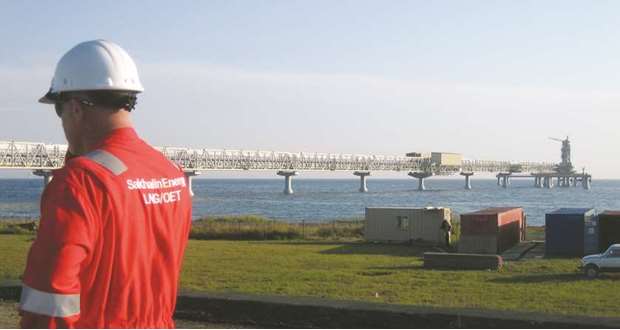Russia plans to take on the US, Australia and other major suppliers in the race to dominate liquefied natural gas production.
The nation has enough planned LNG projects to challenge the world’s top producers as it boosts annual output sevenfold by 2035, Energy Minister Alexander Novak said by email. And that doesn’t even include projects still under consideration, he said.
Novak’s forecast for Russia’s LNG capacity more than doubles an estimate published last month by Paris-based research group Cedigaz. Russia, the world’s largest gas exporter, has offered tax discounts to producers in its Arctic regions as it seeks to increase its influence in LNG, which last year accounted for almost a third of global exports.
The tax breaks “will allow LNG produced in the Far East and at Yamal to compete with foreign fuel even taking into account transportation costs from the Arctic,” Novak said.
Russia sees the projects “boosting its gas-export flexibility, attracting investment in the country and increasing its global LNG market share,” he said. Super-chilled LNG has become an increasingly important way to ship gas, with exports in 2016 able to meet more than three years of gas demand in top LNG importer Japan, according to BP.
At the moment, Russia is sending record volumes of gas to Europe by pipeline as Asia, the biggest consumer of LNG, is willing to pay more amid robust demand in China.
European LNG terminals have low utilization rates and the market is seeing “some stagnation,” Russian President Vladimir Putin said at a panel alongside GECF Secretary General Seyed Mohammad Hossein Adeli in Moscow.
“Competitiveness of LNG at this point of time is inferior to pipeline gas. Gradually, this will change,” Putin said. “We plan to increase supplies of LNG to Asia-Pacific and to western Europe.”
Russia’s planned annual LNG capacity is 78.5mn tonnes by 2035, Novak said, up from one plant producing more than 10mn tonnes a year that started in 2009 on Sakhalin Island, north of Japan. That compares with 95mn tonnes a year seen for the US, 93mn for Australia and 88mn for Qatar in 2035, up from a global total of 258mn in 2016, according to Cedigaz.
The Cedigaz estimate doesn’t include Qatar’s announcement in June that it would increase annual production to 100mn tonnes by 2024 from 77mn tonnes. The global oversupply may start to dwindle after 2021, threatening to spur a deficit equivalent to twice the current output of top producer Qatar, according to Cedigaz.

A worker talks on the phone at the LNG plant at the Royal Dutch Shell-led Sakhalin-2 project south of Korsakov, Sakhalin Island, Russia (file). The nation has enough planned LNG projects to challenge the world’s top producers as it boosts annual output sevenfold by 2035, Energy Minister Alexander Novak said.
